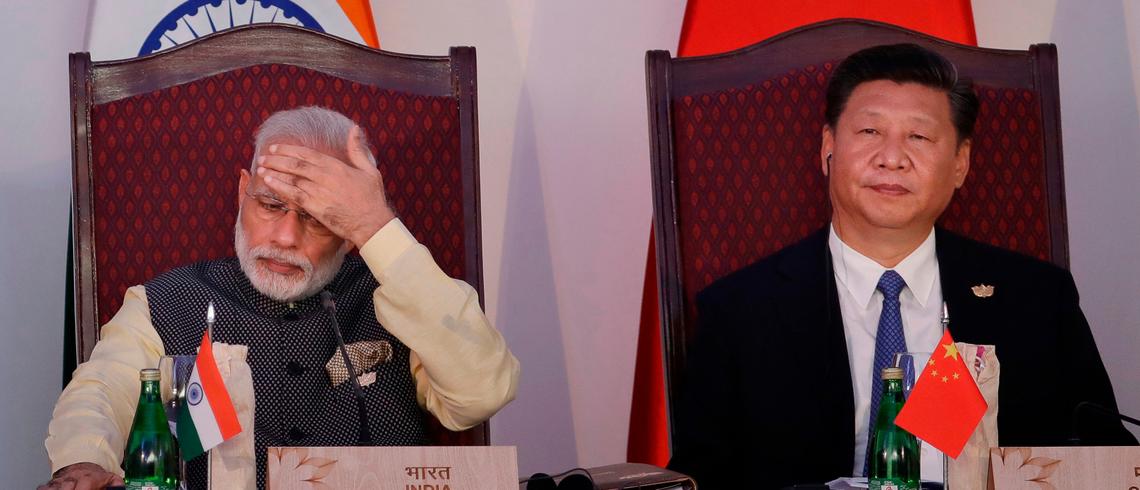Background
On 5th May 2020, Indian and Chinese troops faced off at various points along the disputed and un-demarcated border. Chinese forces objected to Indian road construction in the Galwan valley. During this, India placed 10,000+ additional workers, who would assist India’s Border Roads Organization in completing the development of Indian infrastructure along the Sino-Indian border. The Chinese have also extensively developed their infrastructure in these disputed border regions.
Standoff at Galwan Valley
On the night of 15 June, Indian and Chinese troops engaged in a clash around the Galwan valley, resulting in the death of 20 Indian soldiers and an unknown number of Chinese casualties. India blamed the clash directly on a Chinese desire to ‘unilaterally change the status quo’ on the ground. China claimed that it always owns sovereignty over the Galwan Valley. China has since increased its military presence in that area and stationed its fighter jets. Indian ministry says his country’s desire to “peacefully resolve the border conflict and dismiss regional tensions through dialogue”. Meanwhile, in a sign of de-escalation, foreign ministers from both countries spoke via telephone and agreed to “cool down” tensions. China is taking advantage of India’s recent tensions not just with Pakistan, but also Nepal, to pressurize India. India’s tensions with Nepal were heightened after Kathmandu included territories that it disputed with New Delhi in its official maps.
The revocation of the special status of Jammu and Kashmir, in August 2019, by the Indian government has also troubled the Chinese. However, India and China have both maintained that there are enough bilateral mechanisms to resolve the situation through quiet diplomacy. Both Countries engaged in a similar standoff for 73 days at Dokhlam, at the other end of their disputed border in 2017, when Indian troops were mobilized to counter what was seen as moves by the Chinese side to expand its presence along the border with Bhutan. The situation was later defused through diplomatic channels.
South Asia
China
South Asian region is home to one-fourth of the world’s population, but it is the least economically unified region in the world. Since the beginning of the 21st century, China has been conducting multi-dimensional cooperation with all the South Asian countries (Afghanistan, Bangladesh, Bhutan, India, Maldives, Nepal, Pakistan, and Sri Lanka). China’s major interests in South Asia include promoting stability in both Pakistan and Afghanistan to facilitate trade and energy corridors throughout the region that China can access and to increase its presence in the Indian Ocean Region. India fears that China’s investment in South Asian ports not only helps its commercial interests but also facilitates China’s military goals. India considers the Chinese presence in South Asian countries as a design to thwart what was once considered as India’s sphere of influence.
China is concentrating on the construction of airfields and ports at Gwadar-Pakistan, Hambantota-Sri Lanka, Myanmar, and Chittagong-Bangladesh as a part of its strategy, which also includes China’s influence in the South China Sea, the Strait of Malacca, the Indian Ocean, the Arabian Sea, and the Persian Gulf. China has also been increasing its footprint with India’s neighbors Nepal, Sri Lanka, and Pakistan, China is now posing a direct challenge to New Delhi’s influence in South Asia.
Pakistan
Since the standoff between China and India, Pakistan has stood on the side of China. Pakistan’s Foreign Minister Shah Mahmood Qureshi has guaranteed to support China on border tensions with India. The situation has remained relatively calm along the Line of Control between India and Pakistan, due to the Indian engagement in Ladakh in the same region.
India’s abrogation of the special status of Kashmir on August 5, put Pakistan on standby, and there were even worries of a planned Indian military intrusion inside Pakistan-administered Kashmir and Gilgit-Baltistan. Being a disputed territory, Pakistan has encouraged international intervention to peacefully resolve the dispute. Now, this Chinese and Indian standoff at Ladakh gives credibility to Pakistan’s claim that Kashmir is indeed disputed. China, with its close ally Pakistan, condemned India’s move and raised the issue at the UN Security Council (UNSC).
India
India has strongly opposed the China-Pakistan Economic Corridor (CPEC), a multibillion-dollar project, a section of China’s Belt and Road Initiative (BRI). As it passes through Pakistan-administered Kashmir and Gilgit-Baltistan, India has been plotting with the United States, which also has its reservations about Chinese influence in Pakistan, to disrupt the project. India has criticized Pakistan over tensions on the Line of Control, in the same Kashmir region. Indian Government has directed the state-owned telecom companies, to avoid using Chinese equipment to upgrade their 4G networks. Chinese control of Galwan Valley in the future could threaten India in the Siachen glacier on which Pakistan can capitalize militarily just like Kargil.
Author: Shahzaib Arshad .
Edited By: Talha Ahmad (Editor in Chief PSF)
Note: The views expressed in this article are the author’s own and do not necessarily reflect the editorial policy of Pakistan Strategic Forum.
#TeamPakistanStrategicForum






